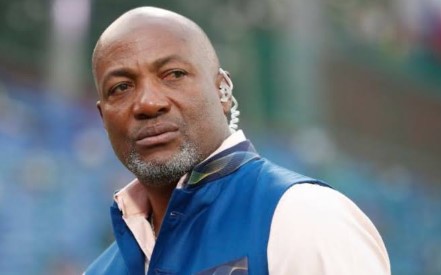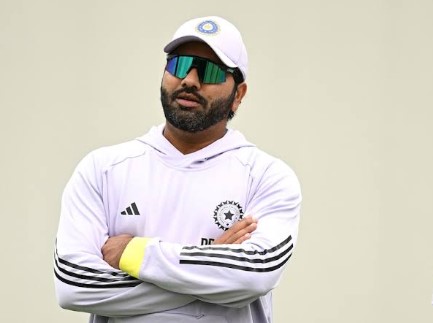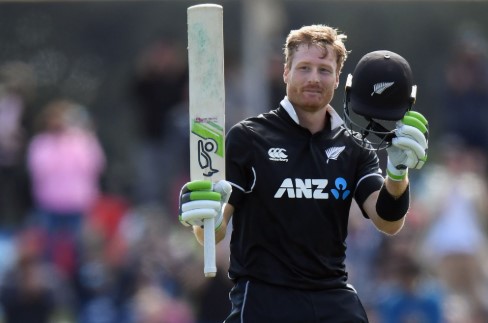Highest Score: Cricket is one of the most exciting sports in the world, with fans eagerly awaiting incredible individual performances. While the game is a team sport, personal milestones like the highest individual score at a cricket stadium create unforgettable moments in history. The record for the highest score at a cricket stadium is a testament to a player’s sheer skill, concentration, and ability to dominate the opposition, making it one of the most celebrated achievements in the sport.
In this article, we explore the highest score ever recorded at a cricket stadium across different formats, the players behind these achievements, and the significance of these records.
Understanding The Highest Score In A Cricket Stadium
When we talk about the highest score recorded at a cricket stadium, we refer to the individual batting record for the most runs scored in a single innings at a particular venue, regardless of the format (Test, ODI, or T20). These innings are remarkable not just because of the sheer volume of runs but also due to the difficulty of maintaining focus and consistency over long periods.
The Highest Score Ever Recorded In Test Cricket

In Test cricket, where matches are played over five days, the challenge for batsmen is to not only build a long innings but to do so against the best bowlers in the world. The highest score ever recorded in a Test match was by Brian Lara of the West Indies.
Brian Lara’s 400 At The Antigua Recreation Ground (2004)*
On April 10, 2004, Brian Lara made history by scoring an astonishing 400 not out against England at the Antigua Recreation Ground in St John’s, Antigua. This remains the highest individual score in Test cricket. Lara’s innings was a perfect exhibition of technique and endurance, where he faced 582 balls and hit 43 fours and 4 sixes.
This achievement is remarkable not only for the score itself but also because it came in a format that is known for its demanding nature. To score such an innings over a period of two days against high-quality opposition was nothing short of extraordinary.
| Rank | Player Name | Score | Opponent | Venue | Date |
|---|---|---|---|---|---|
| 1 | Brian Lara | 400* | England | Antigua Recreation Ground | April 10, 2004 |
| 2 | Matthew Hayden | 380 | Zimbabwe | WACA, Perth, Australia | October 2003 |
| 3 | Michael Clarke | 329 | India | Sydney Cricket Ground | January 2012 |
| 4 | Hanif Mohammad | 337 | West Indies | Eden Gardens, Kolkata | January 1959 |
| 5 | Gary Sobers | 365* | Pakistan | The Oval, London | August 1958 |
Significance Of Brian Lara’s Record
Brian Lara’s 400* remains an unparalleled achievement in Test cricket. Not only did it take a great deal of stamina to stay at the crease for so long, but Lara’s ability to overcome the pressure of such a high run-chase, along with his strategic shot selection, made this innings iconic. The record is unlikely to be surpassed any time soon, considering the changing nature of modern cricket and the increasing focus on shorter formats.
The Highest Score Ever Recorded In One Day International (ODI) Cricket
In One Day Internationals, where each team is limited to 50 overs, batsmen typically aim for quick accumulation of runs while also considering their partnerships. The highest score in an ODI innings belongs to Rohit Sharma of India.
Rohit Sharma’s 264 At Eden Gardens (2014)

On November 13, 2014, during an ODI against Sri Lanka at the Eden Gardens in Kolkata, Rohit Sharma set a world record by scoring 264 runs. This achievement was historic because he became the first player to score more than 250 runs in an ODI match.
Rohit’s innings was built on perfect timing and placement, with 33 fours and 9 sixes. His ability to accelerate at the right moments and his focus over the long haul helped India post an impressive total of 404/5.
| Rank | Player Name | Score | Opponent | Venue | Date |
|---|---|---|---|---|---|
| 1 | Rohit Sharma | 264 | Sri Lanka | Eden Gardens, Kolkata | November 13, 2014 |
| 2 | Martin Guptill | 237* | West Indies | Wellington | March 21, 2015 |
| 3 | Virender Sehwag | 219 | West Indies | Indore | December 8, 2011 |
| 4 | Chris Gayle | 215 | Zimbabwe | Canberra | February 24, 2015 |
| 5 | Sachin Tendulkar | 200* | South Africa | Gwalior | February 24, 2010 |
Significance Of Rohit Sharma’s Record
Rohit Sharma’s 264 is a testament to his temperament and ability to play long innings in limited-overs cricket. His record-breaking innings helped India win the match by 153 runs and also established his reputation as one of the finest ODI batsmen of his generation. Rohit has also been the only player in ODI history to score three double-centuries, further cementing his place in the cricketing elite.
The Highest Score Ever Recorded In T20 International Cricket
The shortest format of the game, T20 cricket, is known for its explosive batting, with a focus on hitting boundaries and scoring runs quickly. The highest score ever recorded in T20 cricket came from Chris Gayle of the West Indies.
Chris Gayle’s 175 At The M Chinnaswamy Stadium (2013)*

In the 2013 IPL (Indian Premier League), Chris Gayle played one of the most explosive innings in T20 cricket history. On April 23, 2013, he scored a blistering 175* off just 66 balls for the Royal Challengers Bangalore against the Pune Warriors India. Gayle hit 13 fours and 17 sixes, leaving the opposition with little chance to stop him. His innings was a masterclass in power hitting and demonstrated the aggressive potential of modern T20 batting.
| Rank | Player Name | Score | Opponent | Venue | Date |
|---|---|---|---|---|---|
| 1 | Chris Gayle | 175* | Pune Warriors India | M Chinnaswamy Stadium, Bangalore | April 23, 2013 |
| 2 | Brendon McCullum | 158* | Royal Challengers Bangalore | M Chinnaswamy Stadium, Bangalore | April 18, 2008 |
| 3 | Adam Gilchrist | 109 | Kolkata Knight Riders | Rajiv Gandhi International Stadium | May 19, 2009 |
| 4 | David Warner | 126* | Kolkata Knight Riders | M Chinnaswamy Stadium, Bangalore | April 12, 2017 |
| 5 | AB de Villiers | 129* | Gujarat Lions | M Chinnaswamy Stadium, Bangalore | May 14, 2016 |
Significance Of Chris Gayle’s Record
Chris Gayle’s 175* in IPL 2013 is widely regarded as one of the greatest T20 innings of all time. His incredible ability to clear the boundary and his aggressive stroke play made him a key figure in T20 cricket. Gayle’s knock helped the Royal Challengers Bangalore set an insurmountable total of 263/5, a record in T20 cricket. Gayle’s innings, with its combination of power and skill, redefined the potential of a T20 batsman.
The Future Of High Scores In Cricket Stadiums

As the game of cricket continues to evolve, with improved fitness levels, modern bats, and strategic changes, it is likely that we will see more records being broken. Players are constantly pushing the boundaries of what’s possible in batting, with more aggressive and innovative approaches being introduced in all formats.
However, Brian Lara’s 400* in Test cricket, Rohit Sharma’s 264 in ODIs, and Chris Gayle’s 175* in T20s are likely to stand the test of time as the highest scores ever achieved at cricket stadiums for many years to come.
The highest scores recorded in cricket stadiums are a reflection of the batsmen’s skill, determination, and ability to perform under pressure. From Brian Lara’s timeless 400 in Antigua*, to Rohit Sharma’s record-breaking 264 in Kolkata, and Chris Gayle’s explosive 175 in Bangalore*, these innings have left an indelible mark on the history of cricket.
As the game evolves and new players rise to prominence, these records will continue to be a benchmark for greatness in the sport. Cricket fans around the world will continue to celebrate these incredible feats, knowing that records like these are not just about the numbers but about the stories behind them.

